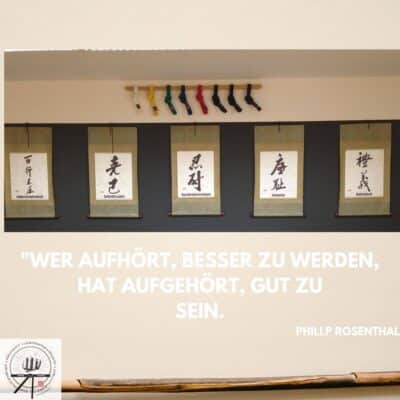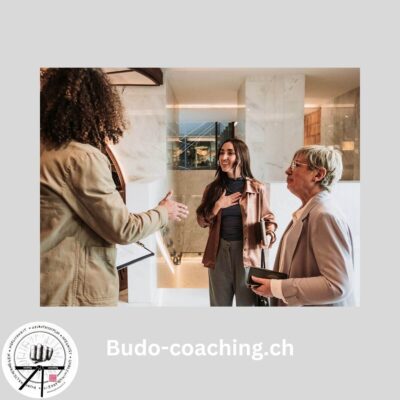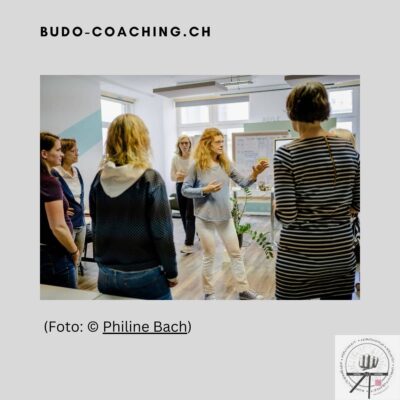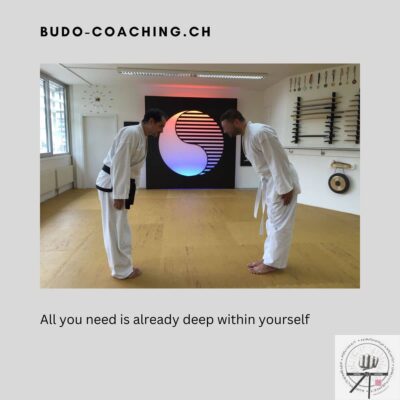Open up to your world of possibilities Do you find yourself constantly worrying about what…

Kaizen: forward in small steps
How to continuously improve your work and everyday life
The term Kaizen – which roughly means change for the better – was coined in 1970 by Masaaki Imai in his book on organizational development “Kaizen (Ky’zen), the Key to Japan’s Competitive Success”.
Kaizen describes the pursuit of constant and never-ending improvement in small steps. In our Western world, Kaizen is often referred to as a method, focused on results. But it is much more than that: it is an approach driving the actions and thinking of a company at all levels. It is a way of facing daily challenges and pursuing goals where the emphasis is rather on the process.
Initially, Kaizen was mainly fostered in the manufacturing sector: Toyota is one of the greatest standard-bearers of Kaizen, which the core of production and company values. Kaizen is however present in a wide variety of industries and areas, including administration: where work processes can be optimized, quick reactions to customer feedback can be implemented and accountability as well as personal responsibility among employees can grow.
Continuous improvement process
The idea behind kaizen is that success can only be maintained in the long term through constant changes, adjustments and optimizations. This does not necessarily refer to the groundbreaking innovations, but to small changes or ideas which are, easy to introduce and implement: so if a problem crops up, the best way to solve it is to see the place where it occurred, consider solutions by observing and solve it. The cycle of improvement is constant, there are no limits and so that the impact on the quality of products, processes or service is considerable in the long term.
This cycle of constant improvement (PDCA -plan, do, check, act) includes four phases:
PLAN: Identify an idea, a topic or a challenge is and describe the situation
DO: In this phase, the solution or the measures are tested and implemented with as little effort as possible as trial.
CHECK: The results of the implementation are checked: did the change bring about the desired improvement? What did we learn? Did something go wrong?
ACT: If yes, the change can be adopted on the large scale, communicated and implemented as a binding standard. If not, it means that there still is potential for further optimization: and the cycle starts all over again.
This principle can be applied everywhere, including the HR department or in service. Each area should strive for continuous improvement: only constant further development can ensure long-term competitiveness.
Leading with Kaizen
Kaizen is effective if it is lived at all layers as part of the company values. There is always room for improvements and it doesn’t matter who brings ideas; What counts are the benefit or the added value for the company as a whole. It’s not about egos and lone fighters who want to stand out, but about the collective positive impact, across functions and departments.
Suggestions to the better can arise from every employee or layer; each and everyone is accountable for contributing with its own skills and knowledge – the CEO as well as the team leader or the specialist. Because the potential for recognizing and developing things lies right there where the work is done.
In this context, leading means, among other things:
- to act as role models
- to develop yourself for the better and always reflect on your own actions
- Valuing others, encouraging them and helping them to develop
- to trust the employees in their respective areas of competence
- to involve your own team in decisions
- to communicate openly and with transparence
- To create a clear framework
- to set common goals
A work and life philosophy
Change and improvement in all areas are part of the Asian mentality; they are learned from an early age and Kaizen is lived as a matter of course. That is why Kaizen is not a method, but a philosophy of life and work. In the Kaizen way of thinking, the optimization process has a beginning but no end:
Changes are part of life. Nothing remains as it is. Everything flows.
But how can this approach of continuous further development and improvement be reconciled with the need for consistency and stability?
Stability and agility are not mutually exclusive as long as the framework for action is clearly defined: the structure in which we move is the stable element which offers system, support, orientation. However, within these frameworks there is space to move and change along with the opportunity to improve things or do them differently. This requires the willingness to regularly question whether the things we are doing are still productive and, if not, to work on them, outside the limits and comfort zones.
Tools
To support work streams, Kaizen offers a kind of toolbox – a series of useful instruments and principles that every employee can apply to improve efficiency, such as 5S; 5S can be apllied in all areas of life, in the office ar at home.
Sort (Japanese: Seiri): Remove or get rid of unnecessary items from your workspace!
Systematize (Seiton): Keep what you need well organized and ordered. Whatever you do not use, should be stored out of the way.
Cleaning (Seiso): Everyone is accountable for a proper and clean workstation. Cleanliness also includes repairing broken things and ensuring safety in your own work environment.
Standardize (Seiketsu): Standardizing processes and routines can save time and make tasks easier.
Sustain (Shitsuke): With discipline, keep the 5s standard – keep at it!
At work we call them standards; at home is more about our habits in everyday life, how we do or arrange things.
Do we need them? Well, it is our routines and habits, such as assigning objects to a fixed place, that make life easier for us, giving meaning and method to our efforts.
How can we use Kaizen in everyday life?
Kaizen helps us with the power of small steps to,
- achieve goals
- improve ourselves with minimal effort
- To reach things that we would otherwise abandoned along
Read more, learn a new language, exercise three times a week, cook healthy meals yourself… how often do we fail with our good intentions? We often take the New Year as an opportunity to start enthusiastically with new plans, only to break them a short time later. We’re not following through.
Motivation is hard to keep up: on some days we are full of energy, on other days we just manage to do our duties thanks to routine and discipline. And while we sink back into our comfort zone, the set goals move further and further away until they are forgotten.
Kaizen gently pushes you
Suppose you want to exercise more, but you’ve failed several times: instead of making a 2-hours gym resolution 3 times a week, start by dedicating 5 minutes a day
to a short, regular exercise routine. For example, squats, push-ups, sit-ups or light stretches. After a week, the whole thing will feel easier, in fact so good that you may want to invest more time in it. Motivation will increase by itself.
You will gradually become fitter, without time pressure and excuses. You will make small but significant changes for the better as you create new, healthy habits at your own pace.
The advantages:
- The set goals are realistic, feasible with little effort and therefore achievable.
- You don’t need to plan or prepare – you decide what, for how long and where
- Big goals are broken down into small chunks, making them much easier to digest
- You discover in a gentle way that self-discipline leads you to the desired results
- You will also build endurance and resilience
- Your achievement will strengthen your self-confidence
“If you stop getting better, you stop being good.”
This quote pretty much sums it up.
The Kaizen way of thinking is actually nothing new: it has always been part of the teaching of Asian martial arts; this philosophy is hidden e.g. even in the word “Kung Fu,” which roughly translates to “skill acquired through hard, patient work.”
Every martial artist, successful athlete or entrepreneur knows that staying at the top requires discipline, perseverance and will, keeping the attitude and the humility of the challenger.
We are happy to support your successful start into the new year. Are you ready for a change of perspective? Make it your goal to take small but significant steps to reach your goal. Learn more on our services page.



